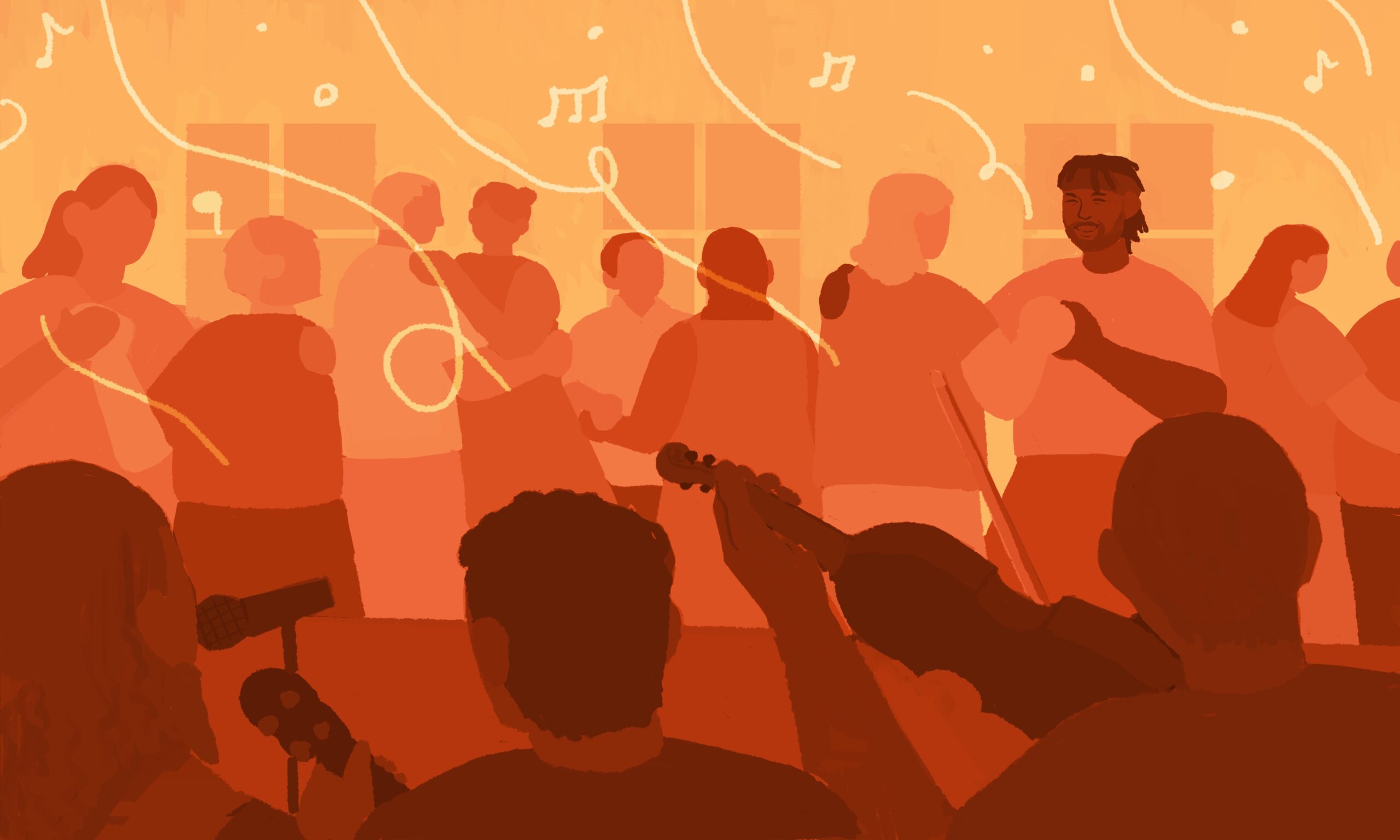
EMILY WHANG / NEXTGENRADIO
What is the meaning of
home?
Tracey J. Shanklin, speaks with Amanzi Umoya, who has danced their way from coast to coast. While Umoya has lived in many places, he says he never felt at home until finding the contra dance community. Now, contra dancing is how he meets friends and expresses himself.
Affton resident finds community in English folk dance
Listen to the Story
Click here for audio transcript
Hmmm home.
You know, I, I think it’s the place where you feel the most comfortable.
And I think over the years that’s been a struggle for me because I was in the military, military family, and so we moved around a lot.
And so getting that sense of, of home was always something I was pursuing, whether it is with dancing or with sports, just trying to find where you fit in because it’s, it’s pretty important.
- So my name is Amanzi Umoya. I’m 42.
And so the, the, the first time I really felt that was when I was in, I was living in Charlotte, North Carolina and started contra dancing.
Contra dance is a combination of swing dancing, line dancing with, like, a dash of chaotic square dancing.
And so all those things put together with fiddle music like or, or or bluegrass.
You’re dancing with a partner, yes, but you’re also dancing with your neighbor and your neighbors are helping you too. So it’s like this super collaborative dance where the whole, the whole group or the set is working together to have a good time.
So contra dances are hot. And so I was like, I, I wanna wear clothing that has ventilation. So, because it was a queer friendly spot, I felt ok to wear skirts and wear the skirts that, that would fly out when you’re spinning.
It was the first time I really felt OK to be in my skin somewhere because sometimes that’s a struggle with with looking the way that I do.
I, I would say that I’m non binary, but regardless of how I view myself or how I express myself, I’m a very large, like, like a large guy and, you know, broad shoulders, you know, I look like a football player.
I used to live in Los Angeles and, Pasadena actually. Going home one day I, I passed by this shop, I smelled this incense walk inside and this, it was a, it was a Nepalese woman and she had a bunch of, of these rap skirts that weren’t selling. They were perfect, I thought, for contra dancing. So I bought up a bunch of them.
And when I would go to contra dances, the, the people who would see me, the men, they’d be like, “Hey, where did you get that?”
I was like, “You know, it sounds like you like it. You wanna try it on?”
They’re like, “No, no, no, no, no.”
And by then I already have it off because I’m wearing, you know, wearing something underneath and I’m like, I take it off.
I’m like, “Hey, do you wanna, do you wanna try this on?”
They’re like, “Oh, you know what? Yes.”
And so I put it on them and they wear it and they like flow and feel fabulous.
And at the end of it, I’m like,”Keep it.”
I definitely felt at home with the, the, the contra dance community in Saint Louis. And it’s, it surprised me because I haven’t felt that with a lot of things that I’ve done in this city, like this group, particularly in Saint Louis is, is, is actually quite lovely.
And, and increasingly as I show up and talk to people, there’s efforts to really care for the community that’s around us.
Contra dance is just another hub, another, another place for us to get together and talk and, and work together.
If, on a recent Sunday evening, an outsider were to wander off the leafy streets of Webster Groves into the Monday Club dance hall, they’d be hit with a scene that looked like a cross between Texas line dancing and a ball from a Bridgerton novel. This is contra dance, and it’s become an unexpected haven for Affton resident Amanzi Umoya.
During the contra dance, Umoya and other dancers fly across the floor making patterns, lines, and shapes with other people. Like a conductor, a caller directs the movements, and they follow the commands, swirling and twirling in unison. Dancers keep the tempo by combining the caller’s instructions with accompaniment from musicians playing violins and other stringed instruments.
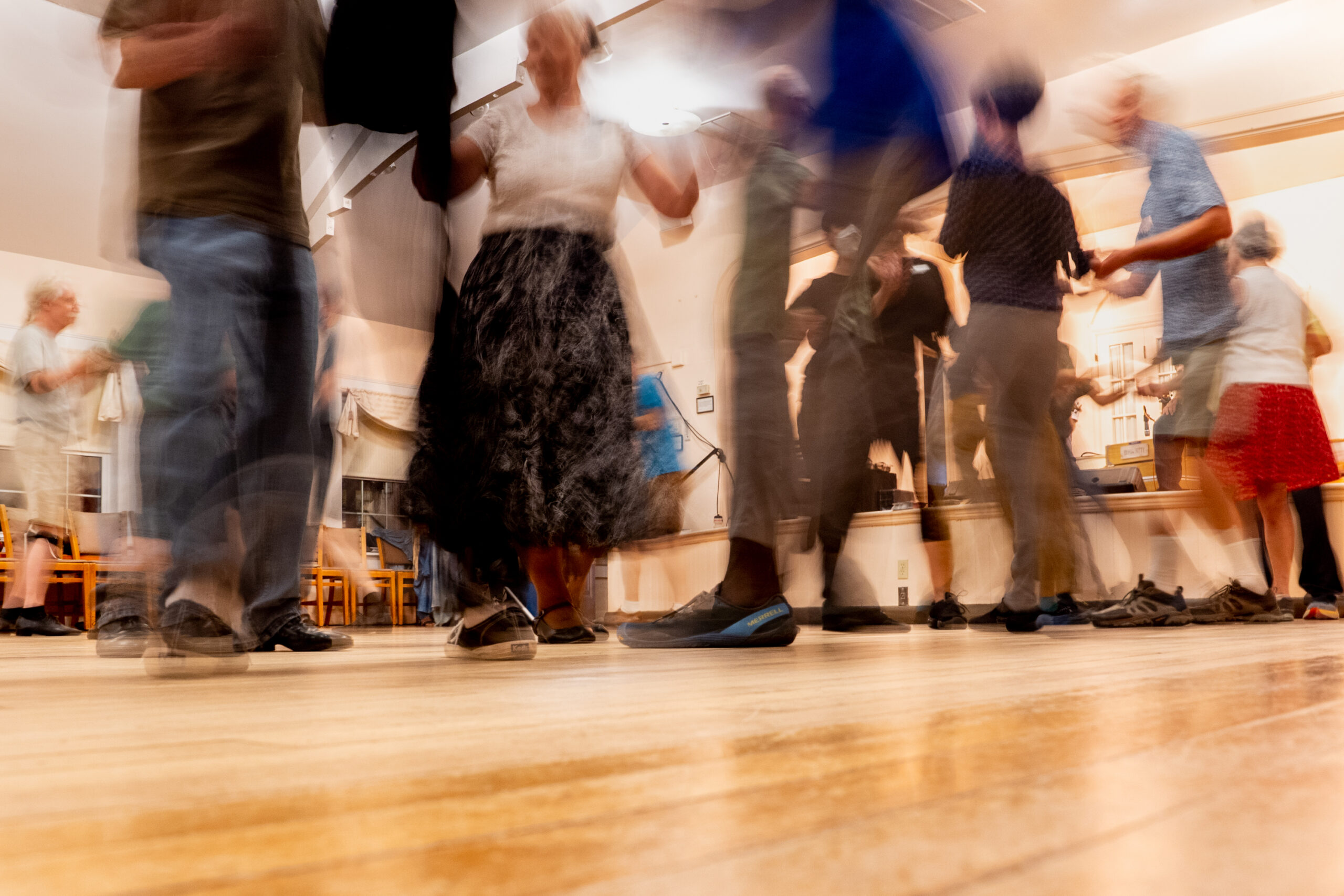
Dozens of people contra dance on Sunday, Sept. 17, 2023, at The Monday Club in Webster Groves.
BRIAN MUNOZ / NEXTGENRADIO
Although the dance can look old-fashioned, for Umoya, it’s a healing art that provides a release from social constructs and expectations.
“It was the first time I really felt okay to be in my skin somewhere, ‘cause sometimes that’s a struggle with looking the way that I do.”
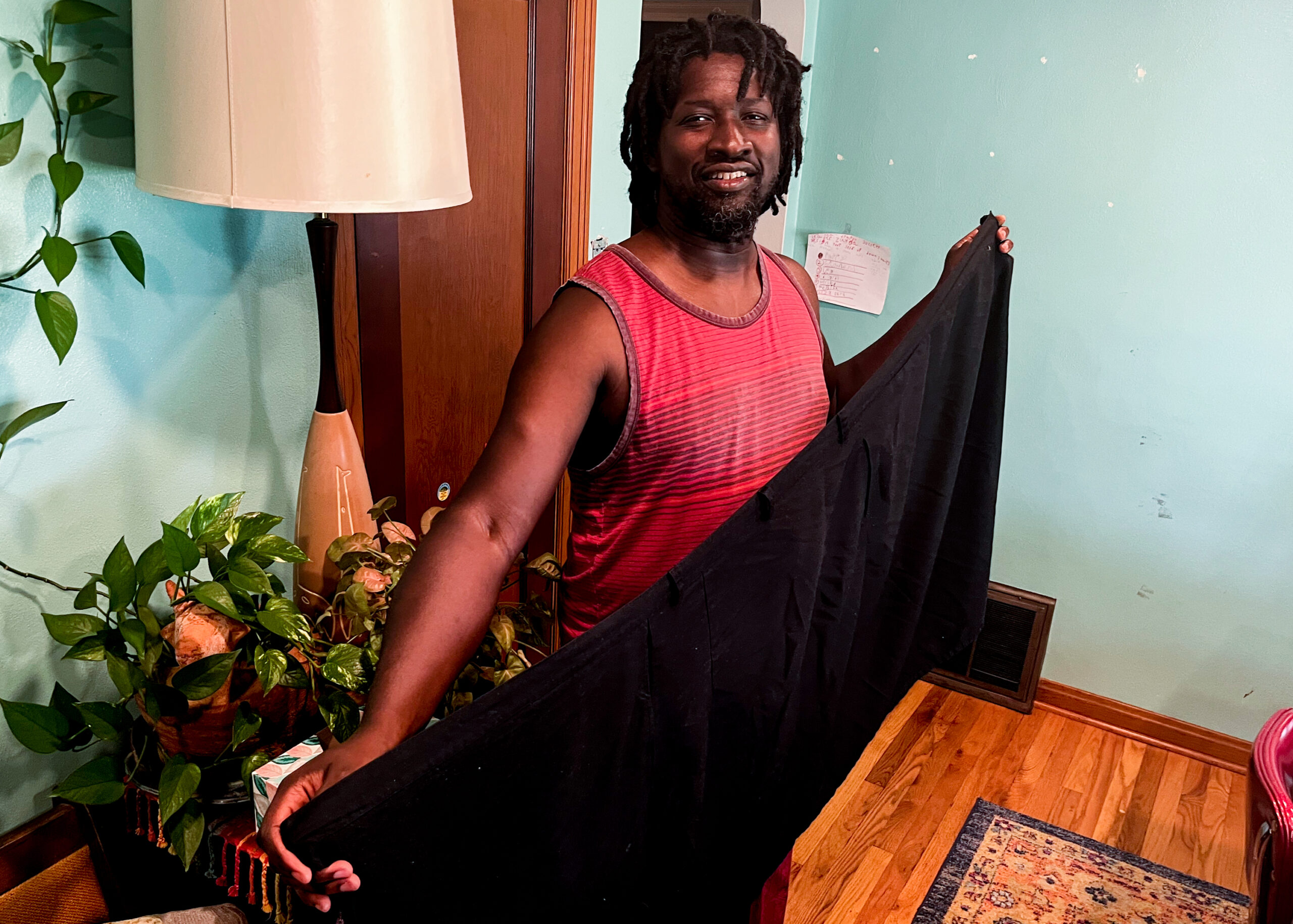
Amanzi Umoya, 42, shows off a skirt he uses to allow for fluid, unrestricted movement on Monday, Sept. 18, 2023, at his home in Affton. The clothing holds a dual role as it’s functional and allows for artistic expression, perfect for a dancer like him with a penchant toward flair or flourish.
TRACEY J. SHANKLIN / NEXTGENRADIO
Umoya, 42, first encountered contra dance after accepting an invitation from a friend while living in Charlotte, North Carolina, more than a decade ago.
They describe themselves as a large guy: broad-shouldered and built like a football player. At the Monday Club, he moved effortlessly through the crowd among twirling bodies, clapping hands and stomping feet.
Umoya, who identifies as non-binary, said there was a time when the contra dance community provided a safe place for them.
Contra dancing, like many types of partner-dance, began with traditional roles for “gents” and “ladies.” However, some modern groups have adopted gender neutral language. Callers will refer to dancers as “leads” and “follows” or “larks” and “ravens,” allowing people to try on both roles.
In addition to the intentional language, Umoya was drawn to fellow dancers’ clothing choices.
“I would say that the garb is one of the things that signaled to me that I was in a safer place,” Umoya said. “People are gonna wear things that keep them cool, but then sometimes people wear things because they’re pretty. So you have folks wearing dresses and skirts, especially skirts that frill out.”
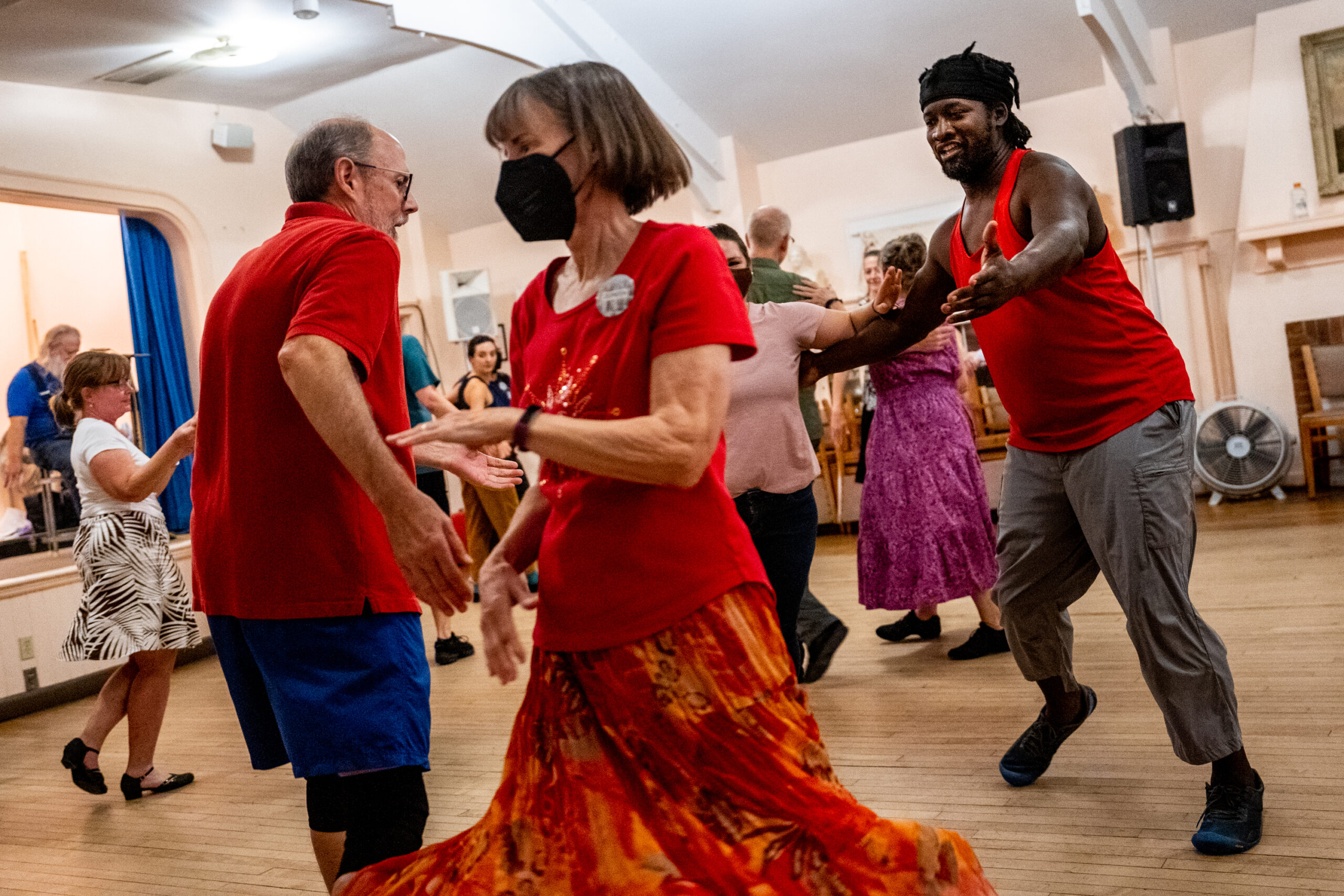
Amanzi Umoya, 42, of Affton, contra dances on Sunday, Sept. 17, 2023, at The Monday Club in Webster Groves.
BRIAN MUNOZ / NEXTGENRADIO
In the past, Umoya has experienced homelessness and joblessness. But by attending dance weekends, he found things to do and friends willing to shelter him.
He took it upon himself to welcome others to the dance.
“My job was to find wallflowers who were kind of standing off to the side, and maybe they’re a little shy and didn’t want to ask any of the more experienced dancers [to dance],” Umoya said. “So, my thing was to find them and help them have a good time.”
After hours of spinning and stomping, dancers work up an appetite. They might meet for a potluck or go for a bite to eat outside the dance hall.
“I remember my Charlotte group in particular, we had this game we would play. We’ll be at a random place … and there’ll be some music playing, and we’re like, ‘Hey, how would you dance with this?’” described Umoya. “[We’d] just start dancing, and so then it just turns into a dance party in the middle of an Applebee’s or in the middle of a diner.”
Once, Umoya decided to contra dance from Virginia to California, driving his Volkswagen to dances along the route. Contra dancing provided a way to connect with strangers in each town he visited.
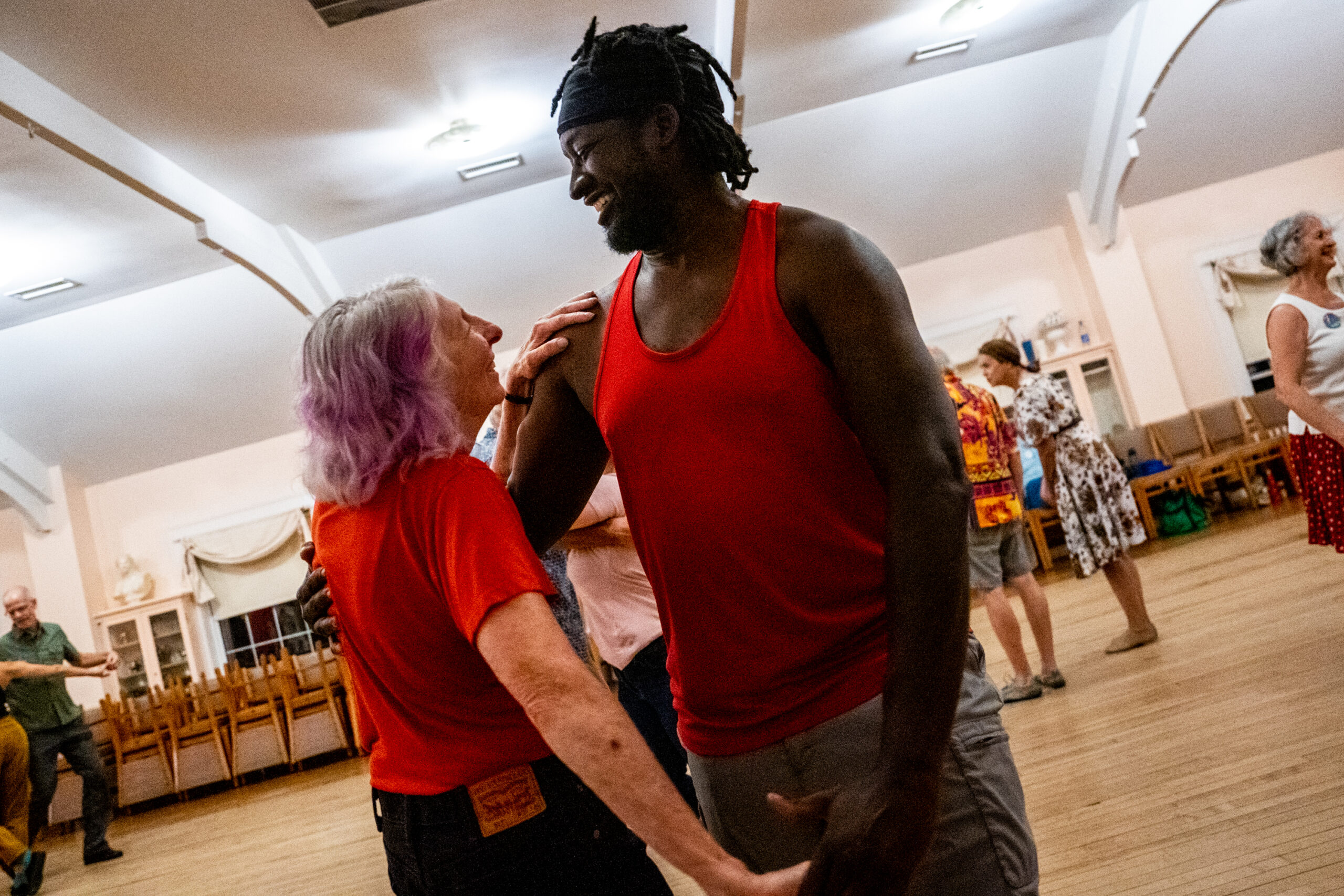
Amanzi Umoya, 42, of Affton, contra dances with Mary Scott, 72, of Tower Grove South on Sunday, Sept. 17, 2023, at The Monday Club in Webster Groves.
BRIAN MUNOZ / NEXTGENRADIO
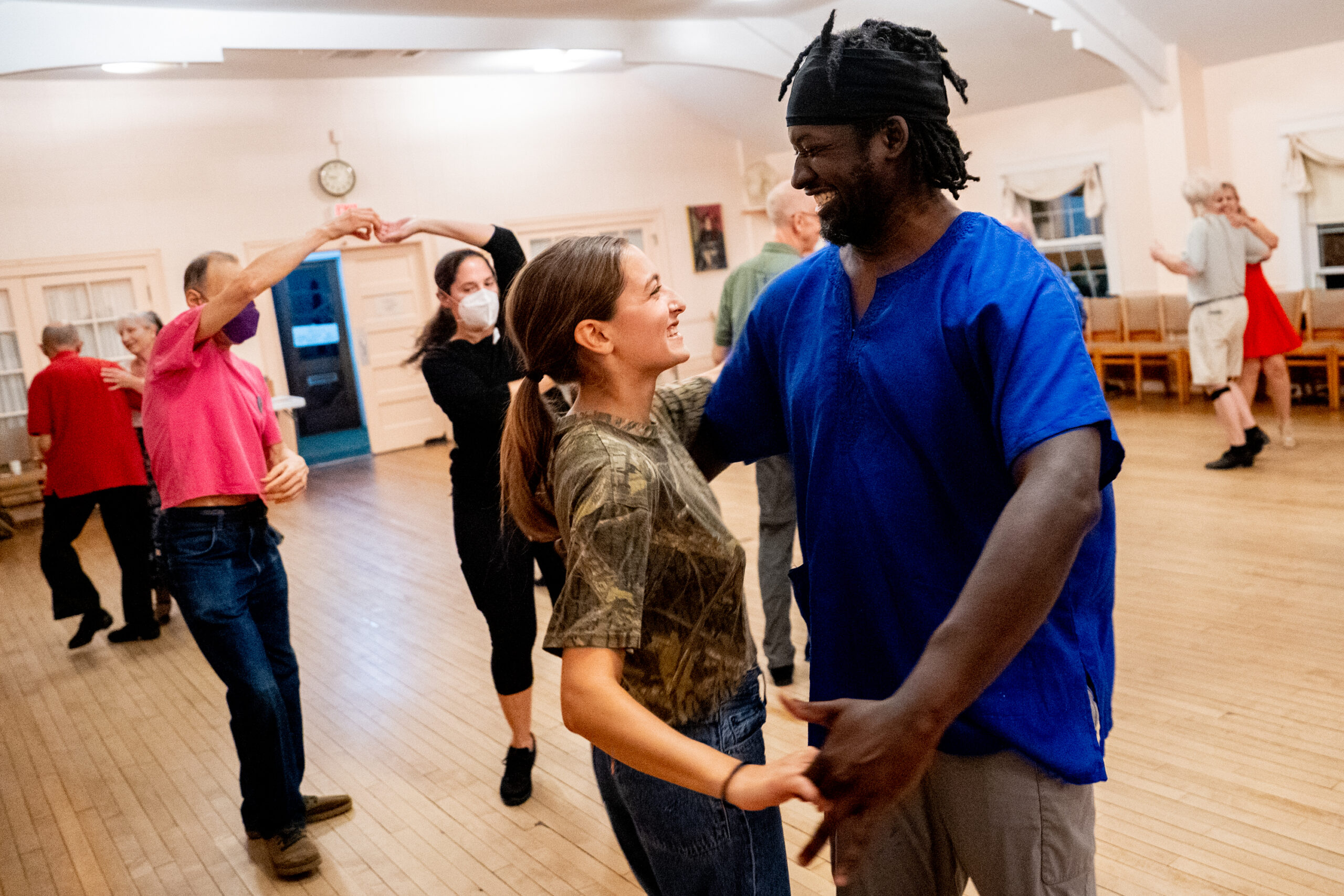
Amanzi Umoya, 42, of Affton, dances to folk music on Sunday, Sept. 17, 2023, at The Monday Club in Webster Groves. Dancers weave with their partners into organized formations of neighbors and friends.
BRIAN MUNOZ / NEXTGENRADIO
“It was the first time I really felt okay to be in my skin somewhere, ‘cause sometimes that’s a struggle with looking the way that I do.”
“Sometimes I will go … in the middle of nowhere, wherever, and not know anyone,” Umoya said. “I did feel eyes on me … whenever I go places in rural areas, particularly, I’m like, ‘Am I okay here?’”
Once the music started and he began dancing, any concerns melted away. Contra dance, Umoya said, has given them a lifelong skill of dancing and communicating.
“I had a red Beetle and rode into the sunset,” said Umoya. “And that sunset was contra dancing.”
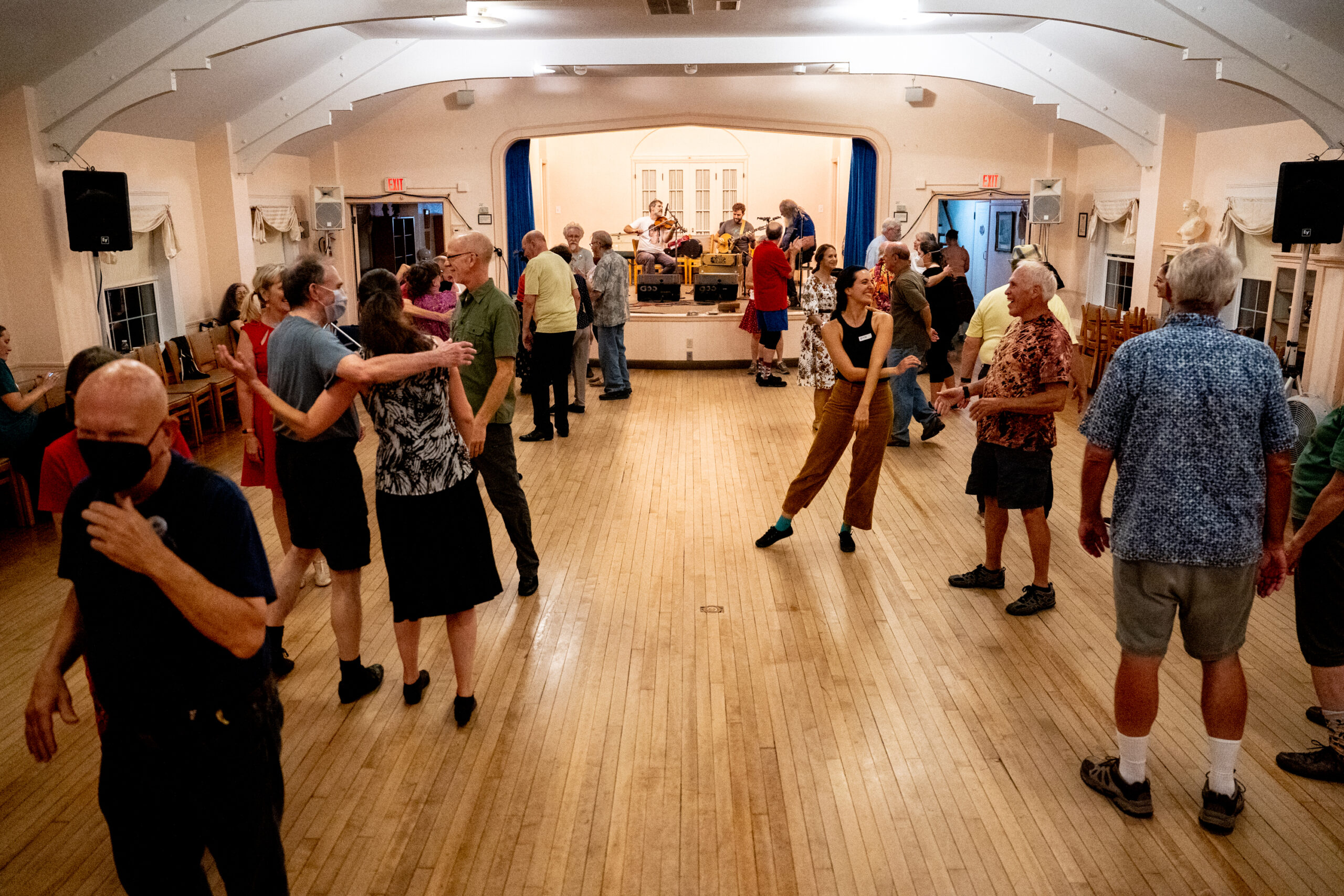
Dozens of people mingle after a contra dance on Sunday, Sept. 17, 2023, at The Monday Club in Webster Groves.
BRIAN MUNOZ / NEXTGENRADIO
